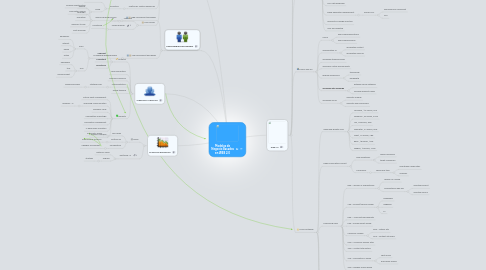
1. STRATEGIC PLANNING
1.1. Features
1.1.1. Coherent
1.1.2. Consistent
1.1.3. Directional
1.2. Value Generation
1.3. Improved Lifecycle
1.4. Instrumentation
1.4.1. Strategic Plan
1.4.1.1. Ongoing Process
1.5. Global thinking
1.6. Benefits
1.6.1. Critical asset management
1.6.2. Improving communication
1.6.2.1. Business - IS
1.6.3. Business Value
1.6.4. Competitive Advantage
1.6.5. Information Management
1.6.6. IS Resources Allocation
1.6.7. Product Lidership
2. CUSTOMER BUYING MODELS
2.1. High involvement purchases
2.1.1. rigorous buying process
2.1.1.1. problem identification
2.1.1.2. information search
2.1.1.3. evaluation
2.1.1.4. decision-to-buy
2.1.1.5. post purchase
2.2. Low involvement purchases
2.2.1. no rigorous buying process
2.2.1.1. AIDA
2.2.1.1.1. awareness
2.2.1.1.2. interest
2.2.1.1.3. desire
2.2.1.1.4. action
2.2.1.2. ATR
2.2.1.2.1. awareness
2.2.1.2.2. trial
2.2.1.2.3. reinforcement
3. BUSINESS PLAN
3.1. Aligning
3.1.1. Excellence
3.1.1.1. Operational
3.1.1.1.1. Quality
3.1.2. Intimacy
3.1.2.1. Customers
3.1.2.1.1. CRM
3.1.2.2. Clients
3.1.2.2.1. ERP
3.1.3. Leadership
3.1.3.1. Products
3.1.3.1.1. Anticipate
3.1.3.1.2. Development
3.2. Technology
3.2.1. Competitive Advantage
3.2.1.1. Know-How
3.2.1.2. IS department
3.2.2. Aligned
3.2.2.1. Business Strategy
3.3. Planning Flow
3.3.1. Maximize
3.3.1.1. Information Value
3.3.2. Improve
3.3.2.1. Processes
3.4. System Resources
3.4.1. Allocation
3.4.1.1. Business Benefit
3.4.1.2. Avoid
3.4.1.2.1. Rework
3.4.1.2.2. Redesign
3.5. Save Money
3.5.1. Life cycle
3.5.1.1. IS
3.5.2. Proper planing
3.5.2.1. Prioritizing
4. PLANNING APPROACH
4.1. Types
4.1.1. Top-down
4.1.1.1. Autocratic Power
4.1.2. Bottom-up
4.1.2.1. Autonomous Divisions
4.1.3. Combination
4.1.3.1. Changes accordingly
4.2. IS
4.2.1. Optimum value
4.2.2. Aligned
4.2.2.1. Strategy
5. WEB 2.0
5.1. Evolution
5.1.1. Technologies
5.1.2. Communications approaches
5.2. Examples
5.2.1. Digg
5.2.2. Facebook
5.2.3. Flickr
5.2.4. YouTube
5.3. Main characteristics:
5.3.1. Supporting participation
5.3.2. User generated content
5.3.3. Rating of
5.3.3.1. Content
5.3.3.2. Online Services
5.3.4. Ad funding of free services
5.3.5. Hosted as
5.3.5.1. web services
5.3.5.2. interactive applications
5.3.6. XML Data exchange
5.3.7. Rapid application development
5.3.7.1. using AJAX
5.3.7.1.1. Asynchronous JavaScript
5.3.7.1.2. XML
5.3.8. Simplicity in design and style
5.3.9. User Documented
5.4. Furure Web 3.0
5.4.1. Use of
5.4.1.1. web-based applications
5.4.1.2. web-based services
5.4.2. Incorporation of
5.4.2.1. syndicated content
5.4.2.2. syndicated services
5.4.3. Increased streamed video
5.4.4. Immersive virtual environments
5.4.5. Require advances in
5.4.5.1. technology
5.4.5.2. bandwidth
5.4.6. Increased data exchange
5.4.6.1. between social networks
5.4.6.2. fulfilling different needs
5.4.7. Increased use of
5.4.7.1. semantic markup
5.4.7.2. semantic web envisioned
5.5. Social Networks
5.5.1. usage and growth 2007
5.5.1.1. MySpace , 114 million, 72%
5.5.1.2. Facebook , 52 million, 270%
5.5.1.3. Hi5 , 28 million, 56%
5.5.1.4. Friendster , 24 million, 65%
5.5.1.5. Orkut , 24 million, 78%
5.5.1.6. Bebo , 18 million, 172%
5.5.1.7. Tagged , 13 million, 774%
5.5.2. Media Comsuption Impact
5.5.2.1. how advertisers
5.5.2.1.1. reach consumers
5.5.2.1.2. target consumers
5.5.2.2. Consumers
5.5.2.2.1. spend less time
5.5.3. Influencing sales
5.5.3.1. 83% – opinion or acquaintance
5.5.3.1.1. opinion of a friend
5.5.3.1.2. acquaintance who has
5.5.3.2. 75% – product/service review
5.5.3.2.1. newspaper
5.5.3.2.2. magazine
5.5.3.2.3. TV
5.5.3.3. 69% – manufacturers website
5.5.3.4. 63% – known expert review
5.5.3.5. consumer reviews
5.5.3.5.1. 60% – retailer site
5.5.3.5.2. 52% – content site users
5.5.3.6. 50% – consumer opinion sites
5.5.3.7. 49% – content site editors
5.5.3.8. 37% – information in online
5.5.3.8.1. chat rooms
5.5.3.8.2. discussion boards
5.5.3.9. 30% – blogger online review
5.5.4. Consumers apply their
5.5.4.1. own filters
5.5.4.2. rate the ratings
5.5.5. participation and sharing
5.5.5.1. information
5.5.5.2. between
5.5.5.3. different applications
5.5.6. Motivators of use
5.5.6.1. 59% - keep in touch
5.5.6.1.1. friends
5.5.6.1.2. family
5.5.6.2. 57% looking other people
5.5.6.3. 47% meet people
5.5.6.4. 46% express opinions
5.5.6.5. 20% dating
5.5.6.6. 17% specific reason
5.5.6.6.1. e.g. wedding
5.5.6.6.2. job networking,...
